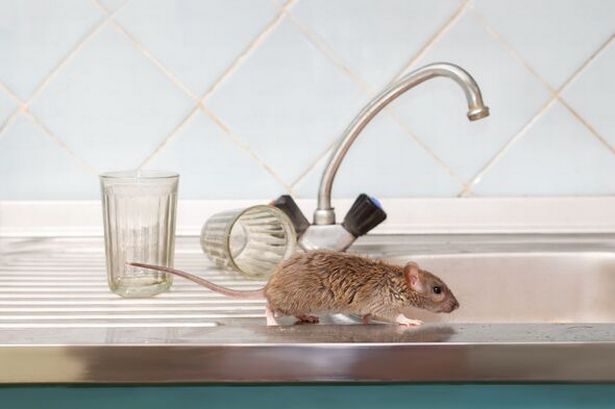If you’ve been hearing strange plumbing noises coming from your water heater, you’re not alone. Many people experience water heater-related plumbing issues at some point in their lives. It’s important to be aware of the top five water heater plumbing issues so that you can be proactive about addressing them before they cause major damage. In this blog post, we’ll discuss the common causes of water heater plumbing issues and what steps you can take to fix them.
Water Heater Leaking
One of the most common and alarming water heater plumbing issues is a leaking water heater. If you notice water pooling around your water heater or any signs of water damage, it’s crucial to address the issue as soon as possible.
There are several possible causes for a leaking water heater. One common culprit is a faulty temperature and pressure relief valve. This valve is designed to release excess pressure from the tank, but if it becomes faulty, it can leak water. Another potential cause is a leaking water supply connection, where the pipes connect to the tank. This can occur due to loose fittings or worn-out seals.
If your water heater is leaking, it’s important to act quickly to prevent further damage. Start by turning off the power supply to the water heater and shutting off the water supply. Next, drain the tank to relieve the pressure and reduce the risk of further leaks. Once the tank is drained, you can inspect the temperature and pressure relief valve and the water supply connections for any signs of damage or leakage.
In some cases, you may be able to fix a leaking water heater yourself by tightening loose fittings or replacing worn-out seals. However, if the issue persists or if you’re unsure about how to proceed, it’s best to call a professional plumber. They will have the knowledge and experience to accurately diagnose the problem and provide the necessary repairs.
Remember, a leaking water heater should never be ignored. Even a small leak can lead to significant water damage and mold growth if left untreated. By addressing the issue promptly, you can save yourself from costly repairs and potential health hazards.
Poor Water Quality
Poor water quality is another common issue that homeowners may encounter with their water heater. When your water heater is functioning properly, it should provide clean and clear water for all your needs. However, if you notice that your hot water has an unusual smell, taste, or appearance, it’s a clear indication that you have poor water quality.
Several factors can contribute to poor water quality in your water heater. One of the main causes is the buildup of sediment and minerals in the tank. Over time, minerals like calcium and magnesium can accumulate in the tank, leading to hard water. Hard water not only affects the taste and smell of your water but can also cause mineral deposits on your fixtures and appliances.
Another common cause of poor water quality is a bacterial or fungal growth in the tank. This can happen if the water heater is not properly maintained or if the temperature is not set high enough to kill off any potential pathogens. The presence of bacteria or fungi can result in a foul odor and even pose health risks if ingested.
To address poor water quality in your water heater, it’s essential to take proactive steps. Regular maintenance, such as flushing the tank to remove sediment, can help improve water quality. Installing a water softener or filtration system can also be beneficial in reducing the mineral content and eliminating impurities from your hot water supply.
If you’re unsure about the best solution for your water quality issues, it’s recommended to consult a professional plumber. They can assess your situation, identify the underlying causes, and recommend appropriate treatments or upgrades to ensure clean and safe hot water for your household.
By addressing poor water quality in your water heater, you can enjoy the benefits of clean and fresh hot water, enhance the longevity of your plumbing system, and maintain a healthier living environment.
Sediment Build-Up
Over time, sediment build-up is a common issue that can affect the performance and efficiency of your water heater. Sediment refers to any solid particles that settle at the bottom of the tank, such as dirt, sand, or minerals. When water is heated, these particles separate from the water and sink to the bottom, forming a layer of sediment.
The presence of sediment in your water heater can cause several problems. First, it reduces the efficiency of your water heater by creating a layer of insulation between the heating elements and the water. This means that your water heater needs to work harder and use more energy to heat the same amount of water. As a result, you may experience higher energy bills.
Second, sediment can also cause damage to the tank and other components of your water heater. The layer of sediment can trap heat against the tank, leading to overheating and potential damage. It can also clog the drain valve or the pressure relief valve, preventing them from functioning properly.
To prevent sediment build-up, it’s important to regularly flush your water heater. Flushing involves draining the tank to remove the sediment. You can do this by turning off the power supply and cold water inlet valve, attaching a garden hose to the drain valve, and opening the valve to release the water and sediment. It’s recommended to perform this maintenance task at least once a year.
If you’re unsure about how to flush your water heater or if you’re experiencing recurring sediment build-up, it’s best to consult a professional plumber. They can provide expert advice and assistance to ensure that your water heater remains sediment-free and operates at optimal efficiency.
By addressing sediment build-up in your water heater, you can improve its performance, extend its lifespan, and save on energy costs. So don’t let sediment become a nuisance – take action to keep your water heater running smoothly.
Thermostat Issues
Thermostat issues can be another cause of plumbing problems with your water heater. The thermostat is responsible for regulating the temperature of the water in the tank. If it malfunctions, it can lead to issues such as insufficiently heated water or water that is too hot.
One common thermostat issue is a misreading or inaccurate temperature setting. This can result in water that is either not hot enough or scalding hot. It can be frustrating to constantly adjust the temperature dial and still not achieve the desired water temperature.
Another problem that can arise is a thermostat that fails to maintain a consistent temperature. You may notice fluctuations in water temperature during use, such as a sudden blast of cold water in the middle of a shower. This inconsistency can make it difficult to rely on your water heater for consistent hot water.
To address thermostat issues, it’s best to start by checking the thermostat settings and ensuring they are accurately reflecting the desired water temperature. If the settings are correct and you are still experiencing issues, it may be necessary to replace the thermostat altogether.
Replacing a thermostat can be a complex task that requires knowledge of electrical wiring. If you are not confident in your abilities, it’s best to call a professional plumber who can accurately diagnose the issue and make any necessary repairs or replacements.
By addressing thermostat issues promptly, you can ensure that your water heater is providing reliable and consistent hot water for your daily needs. Don’t let thermostat issues disrupt your comfort – take action to keep your water heater running smoothly.
Failed Heating Elements
Failed heating elements can be a frustrating and common issue with water heaters. Heating elements are responsible for heating the water in the tank, so when they fail, you may experience a lack of hot water or water that isn’t heated to the desired temperature. This can be particularly problematic during the colder months when you rely on your water heater for warmth and comfort.
There are a few potential reasons why a heating element may fail. Over time, mineral deposits can accumulate on the heating elements, reducing their efficiency and causing them to wear out faster. In some cases, the heating element may simply reach the end of its lifespan and need to be replaced.
If you suspect a failed heating element, it’s best to call a professional plumber. They have the knowledge and expertise to diagnose the issue accurately and provide the necessary repairs or replacements. Attempting to replace a heating element yourself can be dangerous, as it involves working with electricity and water.
By addressing failed heating elements promptly, you can ensure that your water heater is functioning properly and providing the hot water you need. Don’t let a faulty heating element leave you in the cold – reach out to a professional plumber for assistance. If you need a plumbing company Indianapolis, check out Coopers.
Also Read: The Status and Prospect of Smart Home













